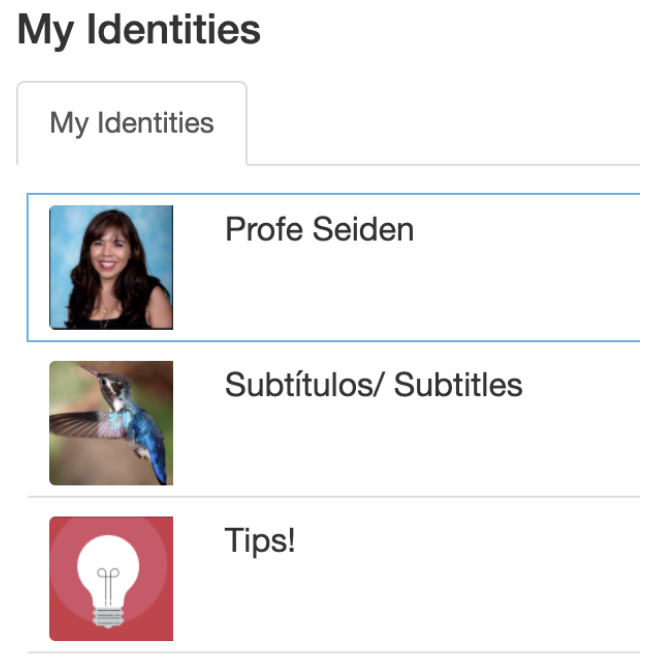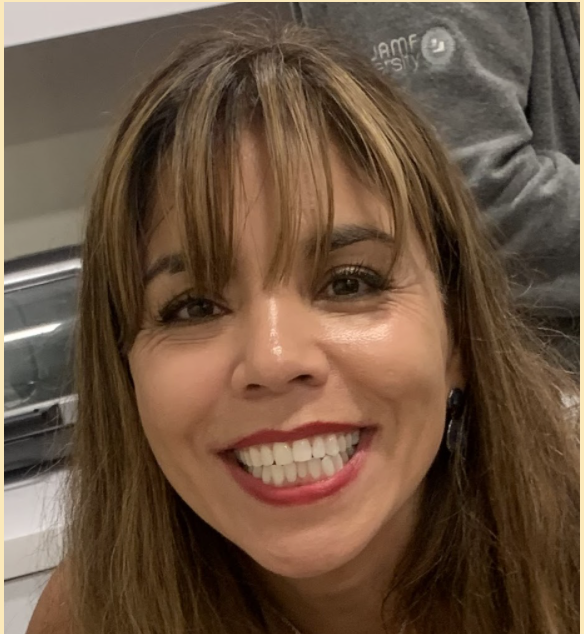VoiceThread = Equitable and Empathetic Learning Communities
This is a guest post by educator and VoiceThreader, By Dr. Carolina Seiden.
During the road to reimagining learning during the times of COVID-19, VoiceThread has become a source of support for my learning community. Here are two new (to me) approaches that have come to the fore because of this reimagining of my teaching efforts.
The first idea centers around the support I can and should provide for my diversely abled and skilled groups of language learners.Take introverts for example. Numerous reports indicate that distance learning has been a welcome change for those in our communities who prefer to participate in less “public” ways. With students’ different personalities and levels of linguistic development, I have been using the “My identities” feature. Different identities create opportunities for meaningful contribution from those who prefer time to weigh their words, or go through painful anxiety when having to use their developing new language in a live setting.

Imagine the sense of achievement felt by the students who are in charge of creating and maintaining subtitles for the work that is created in your VoiceThread’s class? Their work benefits everyone. It is meaningful, and it requires them to hone their listening skills as well as syntax and spelling. Talk about real-life applications! As a bonus, by adding CC (Subtitles) now all your work is more inclusive and accessible. Assigning this task becomes a powerful affirmation of your commitment equity in learning, while acknowledging the abilities of your students as well as the needs of the community who may view the material you are creating in VoiceThread. Similarly, creating an identity for “Tips” can enable another student(s) to share their expertise with tech and media, in order to support students in their use and exploration of VoiceThread, while using Spanish/Chinese, etc.. Now, you have more than a community of compliant students, you have a community of supportive language learners who are using their emerging skills for real life applications.
The second solution that has supported my entire class has been reimagining VoiceThread as a gallery walk. Each language learner takes on aspects of what we are covering in class and they create their project/research/proposal around it, knowing that the audience is our classmates and teacher. The final product is shared with the entire group and during class, we dedicate the entire session or at least 50 minutes, to have students “walk around the gallery” and comment on each other’s work, praise, inquire, seek clarification, build on what they see, or present an opposing view. The conversations can happen within VoiceThread, in breakout rooms, among those in the classroom and those at home, in a combination of media. Some write their comments and others verbally respond to the text shared. At the core, these are students examining the ideas that moved their peers to action, and connecting by learning about the subject, their classmates’ passion, and practicing forms of collaborative discourse in the target language.
These two ideas are a reflection of a renewed commitment to virtual learning conditions that foster a true and meaningful connection among a community of caring and curious humans. People who are discovering the world through the lens of a new language.
About the Author:
Dr. Seiden is a linguist who fell in love with technology as a catalyst of meaningful learning. She teaches Spanish and linguistics at an independent school that fostered her passion to become an Ed Tech Coach. Profe Seiden spends her time teaching, co-learning with her peers, and supporting her school’s Ed Tech world. Her beagles keep her smiling. You can find her on Twitter:_ @ProfeSeiden_

